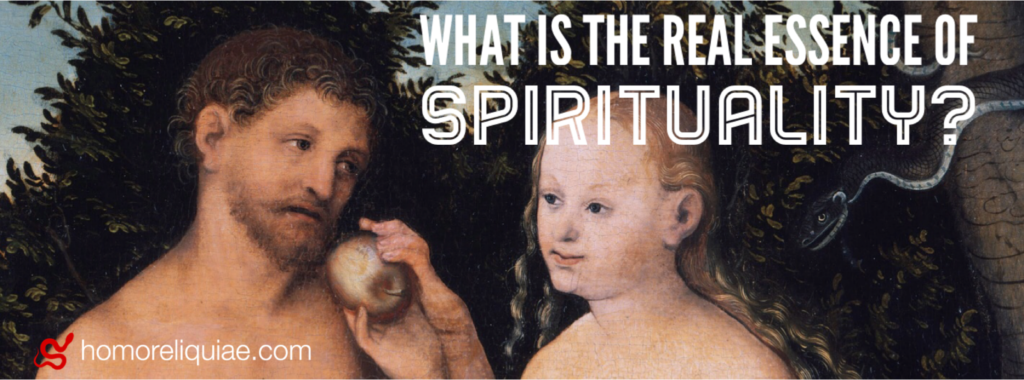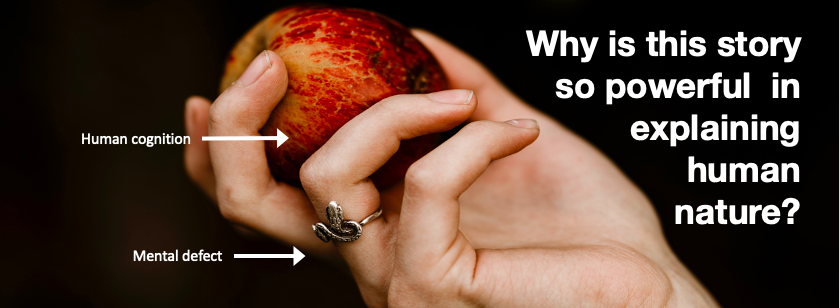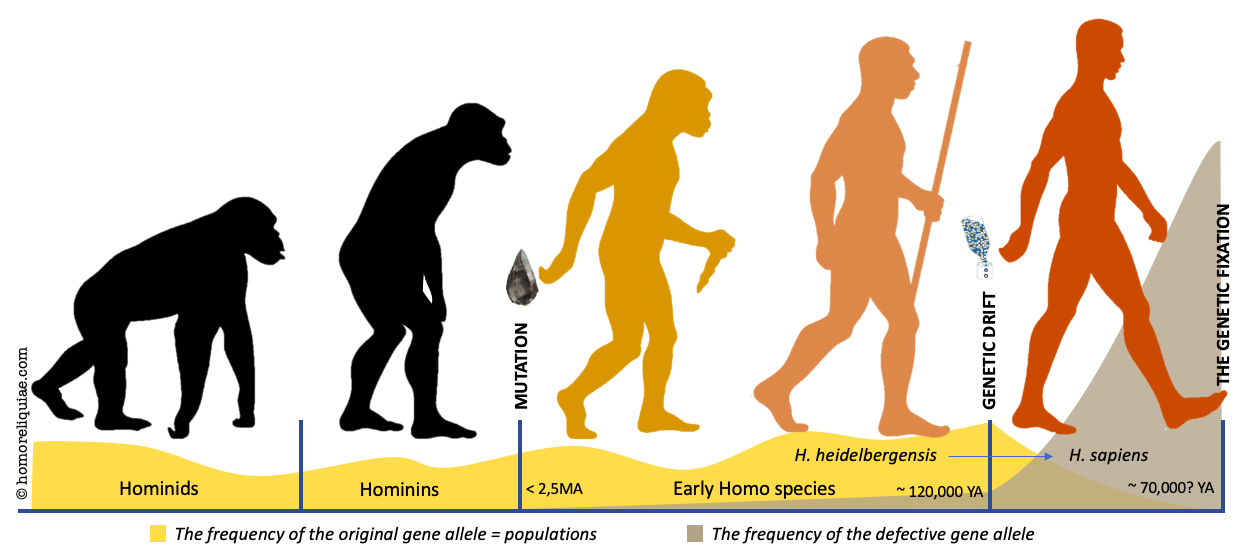Theses
- In terms of evolution, modern humans are 1) a bunch of hereditary defective (sick) individuals 2) of the species Homo bodoensis (the Heidelberg man) 3) who survived while the rest of the species became extinct. Their survival was due to a genetic defect.
- The genetic defect manifests in humans, emphasising childhood traits such as inactivation of instincts and weak sensory function.
- The genetic defect afflicted all homo species, and its most prominent sign was the manufacture of stone tools for over 2 million years.
- Human emergence must have meant the spread of the genetic defect. It happened due to the extinction of normal and healthy individuals of the population.
- Modern humans are considered a species of their own. However, in terms of species, modern humans are just a remnant of Heidelberg man (homo bodoensis). That is because our ancestors, the Heidelbergs, were genetically deteriorated and unified as modern humans in genetic drift +120,000 YA.
- The defect explains both 1) the emergence and 2) the problems of our species. It also clarifies many mysteries of human cultures, such as religion, mysticism, and consciousness.
This very old and highly unscientific diagram is surprisingly good at demonstrating the estimated changes in the ratio of the original and alternative gene allele (i.e. not the progress of species!) over millions of years. It also shows the estimated timing of the key events that led to the decline of modern human genetic diversity.
Theses from various perspectives

The psychological perspective
- Humanity suffers from an inherited mental developmental disorder, a mental genetic defect.
- The disorder means an overemphasis on personality traits. It is the most eye-catching feature of modern humans but is most pronounced in urban environments. It is especially evident in the predominance of childish characteristics.
- We can recognise the overemphasis on personality in adulthood as mental stress, anxiety, and fear.
- This psychic defect only becomes apparent when mental growth stops around 20. Typically, people do not see this as a problem.
- As a child grows older, the usual emphasis on their personality should disappear, but this does not happen.
- Modern humans carry the experiences, memories, and possible traumas of their childhood throughout life. The burden is the cost of the survival of the species. However, in healthy people, before the emergence of our species, adulthood meant the disappearance of the burden of consciousness. That is also recognised in all religions and mystical traditions.
- The cognition, volition, and short-term memory are substitutes for experimentation for children when they need protection from the wild.
- Humans are imprisoned in the rational cage of childhood, which is why the fundamental nature of reality falsely also seems to be rational. However, the essence of rationality is to help children keep their distance from the wild and use anticipation.
- Emotions used to be part of the control mechanism of the child, not the adult. Emotions are not experiences but their substitutes. Mental protection mechanisms prevent all real experiences.
- Shame is a protective mechanism designed to prevent children from growing up too early. Shyness is also a protective mechanism.
- Man learns only as a child. Then, of course, he can study or train as an adult, but that has nothing to do with real learning. A safe and unchanging environment is a prerequisite for childhood learning. A child only learns when he can take the world for granted. When he begins to doubt it, the learning will end.
- The unique quality of modern humans includes the old psychic denial of evolution: we do not evolve because we simply do not allow nature to influence our survival. Accordingly, humans survived the extinction by denying the role of nature in their survival.
- Our mental skew is challenging to detect because it is present in all humanity. If science defines humankind as mentally “healthy and normal”, it is difficult to identify the disorder of the human psyche.

The paleoanthropological perspective
We, the so-called “homo sapiens”, are not a new species but a remnant of the homo bodoensis. The prevailing definition of the modern human is based on arrogant European knowledge from the 18th century.
Healthy individuals of the homo bodoensis population became extinct +120,000 years ago. What remained was the sick individuals, the ancestors of modern humans. The genetic defect carried by all modern humans is at least 2.4 million years old.
The extinction of the Heidelbergs was thus only a narrowing of the species’ genome, not its total disappearance. No new species were born; only something was lost. It is typical of genetic drift.
Archaeological remains referring to the tools are thus not related to the species but a single trait, i.e., an exceptional hereditary genetic defect.
A significant obstacle to understanding human evolution is the species’ concept. The idea of species has nothing to do with understanding human emergence. Man did not evolve slowly but can be said to have been ready for millions of years, not as a species, but precisely as an exceptional trait, a genetic defect.
The first sign of a genetic defect visible to us was stone tools. Toolmaking dates back at least 2.4 million years. We have inherited this trait from other homo species (homo habilis, homo erectus, homo heidelbergensis). We are unique only because our entire population is “sick”. So “modern human” is not really a species, but a mere condensation of the “sickness”.
The scientific mystery of modern human evolution is a problem created by the science of anthropology itself. It looks for answers to human fossils that do not contain any psychic quality.
For millions of years, populations of earlier human species were genetically more heterogeneous than those of modern humans until the massive drought created by the Saale Ice Age in Africa about 150,000 years ago drove populations virtually to extinction. In this disaster, their genetic inheritance “drifted” more uniform and “gave birth” to modern humans as a bunch of genetically defective survivors.

The genetic perspective: humanity means illness
Human unique quality and abnormality are very likely to be hereditary. This claim can be supported by the slow “evolution” of the human species. Hereditary abnormality means a genetic defect, an alternative gene allele to a healthy and typical trait. The faulty allele seems to be recessive.
A genetic defect is a permanent trait that cannot be eliminated, but its effects can be affected even though not by one’s will.
The genetic defect could be inherited through a recessive gene on the X chromosome. As a result, it was initially seen in only a few per cent of the population and much more often in men than in women.
The “evolution” of modern humans is not about the evolution of an individual species but the “migration” of a trait from one species and individual to another.
The alternative healthy gene allele +120,000 years ago began to disappear from the population, and the faulty recessive allele spread accordingly. The extinction was due to the millennial drought in Africa caused by the northern ice age. As a result, the Heidelberg population drifted genetically and became more uniform (“bottleneck phenomenon”). Gradually the population was extinct, except that individuals with the genetic defect survived and, little by little, reproduced more defective individuals. The fact marked the emergence of modern humans. In other words, typically developing individuals disappeared from the population and the defective ones survived.
- The emergence of modern humans as a new homogeneous population was thus not a matter of natural selection.

The neuroscience perspective: everyday consciousness as a mistake
- Everyday consciousness cannot be reasonably explained if we think of it as an instrument intended for adults.
- Permanent daily awareness is a mistake in mental growth that an adult individual should not have.
- Everyday consciousness is a compilation of protection mechanisms for the child. They protect him by distorting and transforming reality. The distortion of reality is not a problem for children, but for adults, it is. The loss of everyday consciousness in the rare, altered states of consciousness (in a mystical or psychedelic experience) therefore feels strange and, for many people, frightening. Consequently, many organized societies have made them taboos, even though they are precisely normal and healthy.
- Brain size does not directly correlate with the most crucial trait in modern humans, namely the genetic defect. However, it correlates with many juvenile features produced by a genetic defect over millennia, like physical appearance and speech. The increase in brain size is the result of, and not the cause of, the overemphasis on the personality found in modern humans.

The psychedelic perspective: the cure
- Psychedelics, mysticism, and religions tell us about discovering a curious feature in the human mind, but they don’t necessarily tell us about understanding its true essence. They make people feel like they’ve come back “home”. They are not an escape but recovery from a disease caused by a genetic defect.
- Psychedelics are not hallucinogens. They do not distort the picture we get of reality. On the contrary, they fix it.
- Psychedelics are by far the best “cures” for a genetic defect, i.e., overemphasis on adult personality.
- Psychedelics by chance can mimic the natural process of altering the mind in the human body and temporarily eliminate overemphasis on adult personality, a genetic defect. As a result, psychedelics help to see reality without the distortion caused by overemphasis on personality and thus to understand reality even after the psychedelic effect has ceased.
- Psychedelics momentarily spotlight the so-called animal consciousness and hide everyday/human consciousness.
- While I share many of Terence McKenna’s brilliant thoughts, my view of human evolution is not the same as his. First, I do not support the so-called Stone Ape theory because it does not explain the emergence of modern humans. Modern humans appeared in the world much earlier than McKenna claimed. Second, in his view, “the discovery of psychedelics” (from the cattle dung) turns upside down. The ultimate reason for consuming psychedelics is not likely to develop human consciousness or live apart from the animal kingdom. I believe they are used because they can bring us back to nature and obliterate everyday consciousness. And the reason is that “being high” was a normal state of mind for healthy human species, not an exception. Obviously, people became interested in psychoactive substances only after they had become “sick”, that is, after losing the normal, healthy state of mind and wanting to get it back. They also needed some luck.

The perspective of religions and mysticism
- The modern conventional religiosity is mostly pretence (fear or desire). However, even though religions are distorted and politicised, people’s need for spiritual change is genuine and justified.
- Religions have their roots in hunter-gatherer cultures where human spiritual weakness was not religious but practical. We can still understand that human sinfulness originally meant an inability to live in harmony with nature. Religions with leaders and human-like Gods are the product of later civilisations.
- Animals live the reality that we mistakenly see only as a possibility for man: high spirituality. It might be humiliating for a civilised person if every animal is more of a god than any human being. Nonetheless, animals still live in paradise (nature), and people do not. Humans are impaired due to increased childhood-related characteristics such as shame and morality. The fact was revealed already in the ancient myth of the Fall of man.
- Man is a disabled animal because his mental growth stops too early. People in ancient times understood that animals grew up and lived in the right way and therefore respected them. Arrogance was born only later in urban cultures.
- Since people feel being separated from nature (paradise), they defiantly define many natural things as supernatural, paranormal, or unnatural. Such are all phenomena of religions and mysticism for which there is no scientific or everyday explanation. However, since nature determines what is natural and what is not, must the mystical phenomena belong to nature because they occur naturally. The natural–unnatural dichotomy only marks the limit of everyday human understanding, not that of nature.
- In spirituality,” death” means the loss of personality, e.g., “me” and ego. This death should happen to every person around the age of 20. At the same time, “death” marks a rebirth in the realm of adulthood. The ambiguity of the concept of death is the reason for the common misunderstanding that there would also be life after bodily death. There is no proof of such. However, in religions, it is a matter of the death of childhood. In spirituality, “life after death,” “resurrection,” and “heaven” refer to the escape from the strenuous phase of youth. Only a person who has experienced such a “death” can understand what grace and forgiveness mean and where they come from.
- The altered state of consciousness, known as a mystical experience, used to be part of the normal process of growing into adulthood. At the end of ones’ teens, everyday consciousness disappeared and was replaced by a void state of mind. The mystical experience is a remnant of a permanent change in the psyche. Unless we see it as a short-lived remnant of an ancient mentality, we cannot understand it. And without that, we cannot understand the beliefs behind mysticism and religions either.
- Religions and psychedelics have a lot in common. However, the origins of religions do not lie in psychedelics but the spontaneous altering of the psyche (the mystical experience).
- Jesus was unmistakeably a mystic. So was Buddha and many others; we only know those few who have dared to speak out and got their names in writings, but there have been many more. Mystics have been resented and even punished in all Abrahamic religions. On the other hand, in the Far East, mysticism has been appreciated. However, the so-called mystical experiences are the essence and starting point of all spirituality. That is also reflected in ordinary folk religion.
- It is merely a childish imagination that a happy life would require knowledge of wisdom. Wisdom and happiness have nothing to do with each other. In fact, knowledge impedes blissfulness. Knowledge is just a measure to secure childhood, nothing else.

The cultural perspective
- Only modern humans can have culture. Culture is a phenomenon that is due to the prolongation of mental childhood. Mythological ideas and rituals can only exist in modern human communities. The rest is overinterpretation.
- Learning is a childhood protection mechanism, and it should not be lifelong. Adults are not meant to obey authority but to think independently.
- School is not the environment that creates the need for a child to learn. Instead, people make the best use of what they know if allowed to do that through experience.
- Civilisation is a phenomenon created by a juvenile mind. Civilisation admires the childlike qualities in the grow-ups while the natural adult qualities are kept hidden or punished. The first civilisations marked the decline of understanding nature. Civilisations wean from independence and make people copies of each other. Instincts and gut feelings are adult features. However, cognition, will, language, and short-term memory are childlike characteristics.
- Rational science reads religious texts like scientific papers. It is wrong and does not consider the highly symbolic manner of expressing spiritual knowledge. The altered states of consciousness concretely mean the disappearance of rationality, which is why language as a rational instrument is not sufficient to describe them. Mystical experiences are explicitly said to be indescribable. It also proves that language is not part of adult life.





